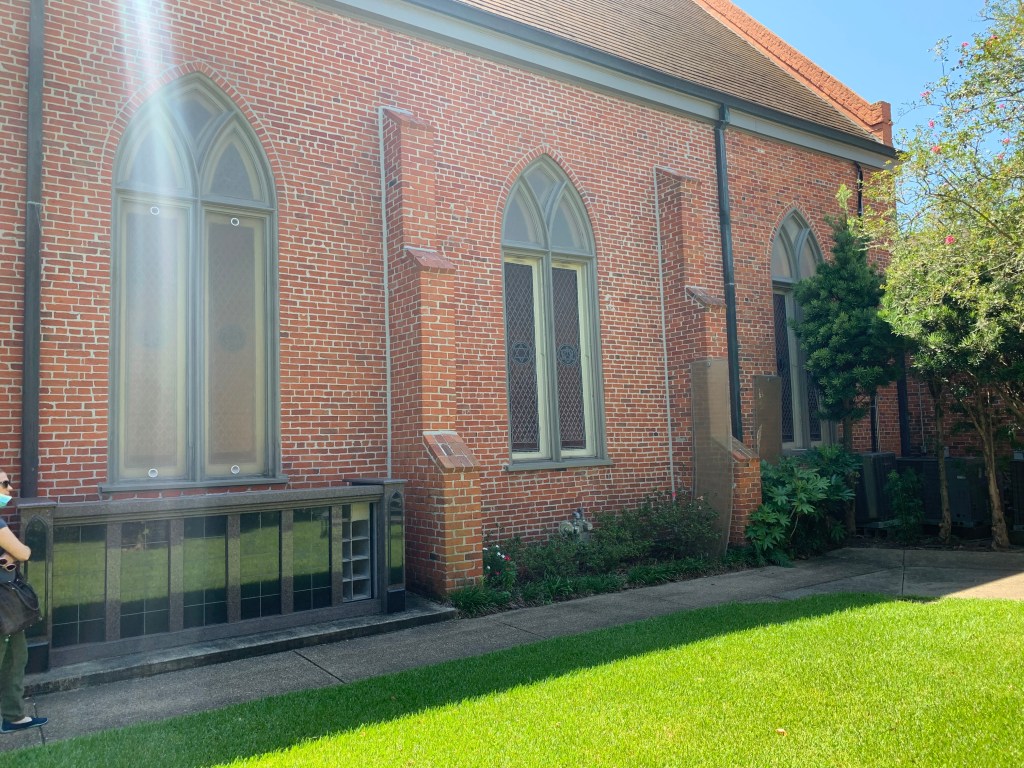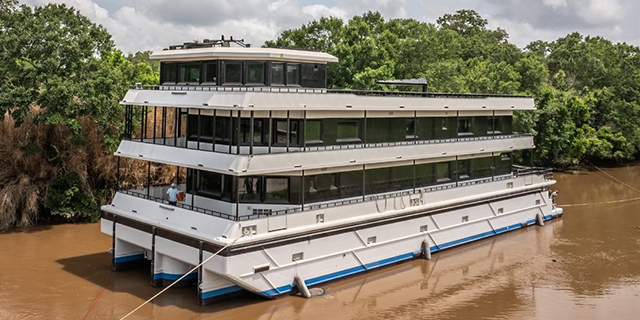Church of the Epiphany Stained-Glass Windows Faithfully Restored
Published 9:12 am Friday, April 16, 2021

- A heavenly beam of light spotlights stained glass at the Church of the Epiphany
As the afternoon sun streams into the Episcopal Church of the Epiphany in New Iberia, the stained-glass windows enhance the natural light and illuminate the interior with soothing colors and images of faith. Especially now, as the Church continues with the restoration of these delicate panes to insure they bring beauty and light to generations of Episcopalians to come.
According to website churchstainedglassrestoration.com, stained glass windows have been used extensively in churches and temples beginning as early as the 7th century. They were meant to let in natural light, give a measure of privacy, as well as inform and inspire.
Many of the faithful were then illiterate, and the stained-glass windows were designed to tell the stories of the Bible and teachings of the Church visually. They presented symbols and precepts in a way most easily understood by all.
Since 1858, the Episcopal Church of the Epiphany has stood on the corner of Main and Jefferson Street. This Gothic Revival edifice is the oldest non-residential building in New Iberia, listed on the National Register of Historic Places.
When it came time to evaluate and possibly restore the stained glass, special care needed to be taken to preserve the building’s history, as well as its functionality. The team dedicated to this project, including senior warden Avery Munson and Alexis White Delcambre, knew they would need to engage an historic preservationist to inspect the building and advise them on their next steps.
According to Delcambre, Robert Cangelosi of Koch and Wilson Architects in New Orleans did the inspection, and affirmed that the windows would need restoration. The panes, which were cemented to metal frames, had begun to bow due to heat, weather and old age. Cangelosi referred the committee to Cynthia Courage of Attenhofer’s Stained Glass Studio of Metairie, one of very few artists to work with historic stained glass.
Courage came to New Iberia and examined the windows, and recommended the plan for restoration. She said that the windows were probably not in place when the church was erected in 1858, but they do date to the 19th century. They may have been part of restorations made shortly after the Civil War.
Courage removed three large double panels and four kites, the smaller panes at the top middle of the window configuration. She brought them to her studio and conserved, flattened and cemented them.
She noted that the windows had some pieces of glass that were cracked or broken, and chose to repair them with a special glue, rather than replace them. The colors would be difficult if not impossible to match because of their age, and she wanted to preserve the integrity of the windows.
The Plexiglas coverings on the outside needed to be reconfigured, as the present covers tended to become dull, and hold water and humidity. The new panels, according to Delcambre, were designed to ‘float’ against the windows to let water flow through, rather than stay within the covers, causing mildew and yellowing.
“We’re very excited to see this project through, said Delcambre. “We await the day our newly restored windows are installed, with the new covers, so everyone can enjoy their beauty, inside the church and out.”
Courage and her team, Anastasiia McGee, Brian Knezeak, Elise Thomas, and Chris Lister are currently cleaning and re-cementing the remaining windows.
One of the windows which is not slated for restoration is the large stained-glass work behind the church altar. Church lore holds that this ornate focal point was donated by Louis Comfort Tiffany of the Tiffany Glass Company of New York. Legend says many women of the church donated their gold jewelry to collect money for the window’s commission. When this amount was not enough, Tiffany donated the window.
Courage examined the altar window, and said that without a certificate of authenticity, the legend could not be positively proven. The window, however, does bear aspects similar to Tiffany; most notably, the colors and the usage of glass ‘jewels’ in the window. These round, mounded pieces of glass incorporated into the design are a Tiffany signature.
Soon, the stained-glass windows of the Episcopal Church of the Epiphany in New Iberia will be restored to full beauty, inspiring the faithful to reflection and peace for years to come.





